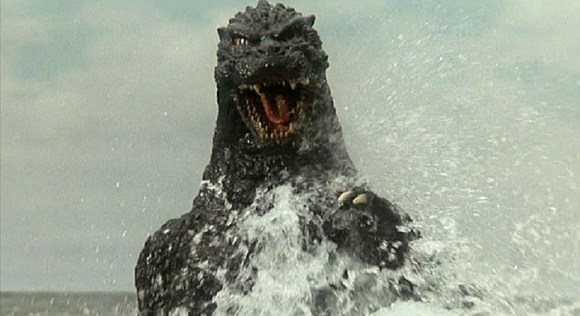
Well, sort of. OK, so that title is a bit misleading. But an article on Yomiuri Online the other day confirmed that researchers have discovered a new underwater geological formation, the largest of its kind in the world, south of the Japanese mainland. Furthermore, they have named it after everyone’s favorite King of the Monsters! This “new Godzilla” could even shed light on some secrets about the inside of the earth. Keep reading to find out more about this amazing scientific discovery.
The Okinotori-shima (literally “remote bird islands”) are often referred to as the southernmost islands of Japan. Along with the Bonin Islands, the Volcano Islands (which include Iwo Jima), and two other isolated islands, they are governed by the Ogasawara Village municipality, which is itself located in the Ogasawara Subprefecture of Tokyo Metropolis. In the southeast corner of Okinotori-shima, the Japan Coast Guard and some ocean research and development teams have recently discovered the world’s largest exposed dome-shaped rock formed from mantle under the earth’s crust (middle school science class review: mantle is the layer between the earth’s crust and its inner core). Think of the rock as a kind of “peeping hole” into the inside of the earth.
▼ Location of the Okinotori-shima Islands on a map
▼ The islets of Okinotori-shima are technically an atoll.
The exposed mass of rock is located approximately 700 kilometers beneath the ocean’s surface. It is 125 kilometers in length, 55 kilometers in width, and approximately 4 kilometers in height (in this case, height = the difference between the deepest part and the tallest part of the rock). In other words, it’s three times the area of the Tokyo Metropolitan area. But the coolest part of the discovery? Due to the appearance of a massive monster on the ocean floor, researchers have dubbed it the “Godzilla Megamullion“! Apparently this is not a nickname but its official title. The name has already been used in scientific papers and the 14 protrusions on the rock confirmed up until now are referred to as “Godzilla’s head,” “Godzilla’s neck,” “Godzilla’s tail,” etc. Don’t you just love a scientist with a sense of humor?
To enlighten all the non-geology majors like me out there, the term “megamullion” is also known as an oceanic core complex (OCC). It is described as “a seabed geological feature that forms a long ridge perpendicular to a mid-ocean ridge. It contains smooth domes that are lined with transverse ridges like a corrugated roof.” Hope that helps a little…
The Godzilla Megamullion was formed an estimated 1 million to 5 million years ago when a portion of the earth’s crust on the ocean floor was forced open by tectonic activity and mantle rock was pushed into exposure above the surface. Studies have also confirmed vestiges of this dislocation process within the rock.
Mantle cannot usually be seen by direct observation, so this discovery will prove useful to scientists studying its composition. It is additionally important as an underwater resource because mantle contains deposits of minerals from which metals or precious gems may be made. Typically, lava at the bottom of the ocean on the earth’s crust cools, then hardens into basalt. But because Godzilla Megamullion was formed by a dislodged section of the earth’s mantle, it is composed of rocks common to the earth’s upper mantle, such as peridotite.
▼ Peridotite
If you click the Yomiuri Online link here, you can view a graphic illustrating the formation of the Godzilla Megamullion.
If other exposed mantle rocks happen to be discovered in the same area, I would personally love it if researchers kept up the trend of naming them after other characters from the Godzilla franchise. How would you like to see a Mothra, Ghidorah, or even King Kong Megamullion?
Sources: Yomiuri Online, Wikipedia (1, 2)
Images: Araneda, Wikipedia (1, 2)